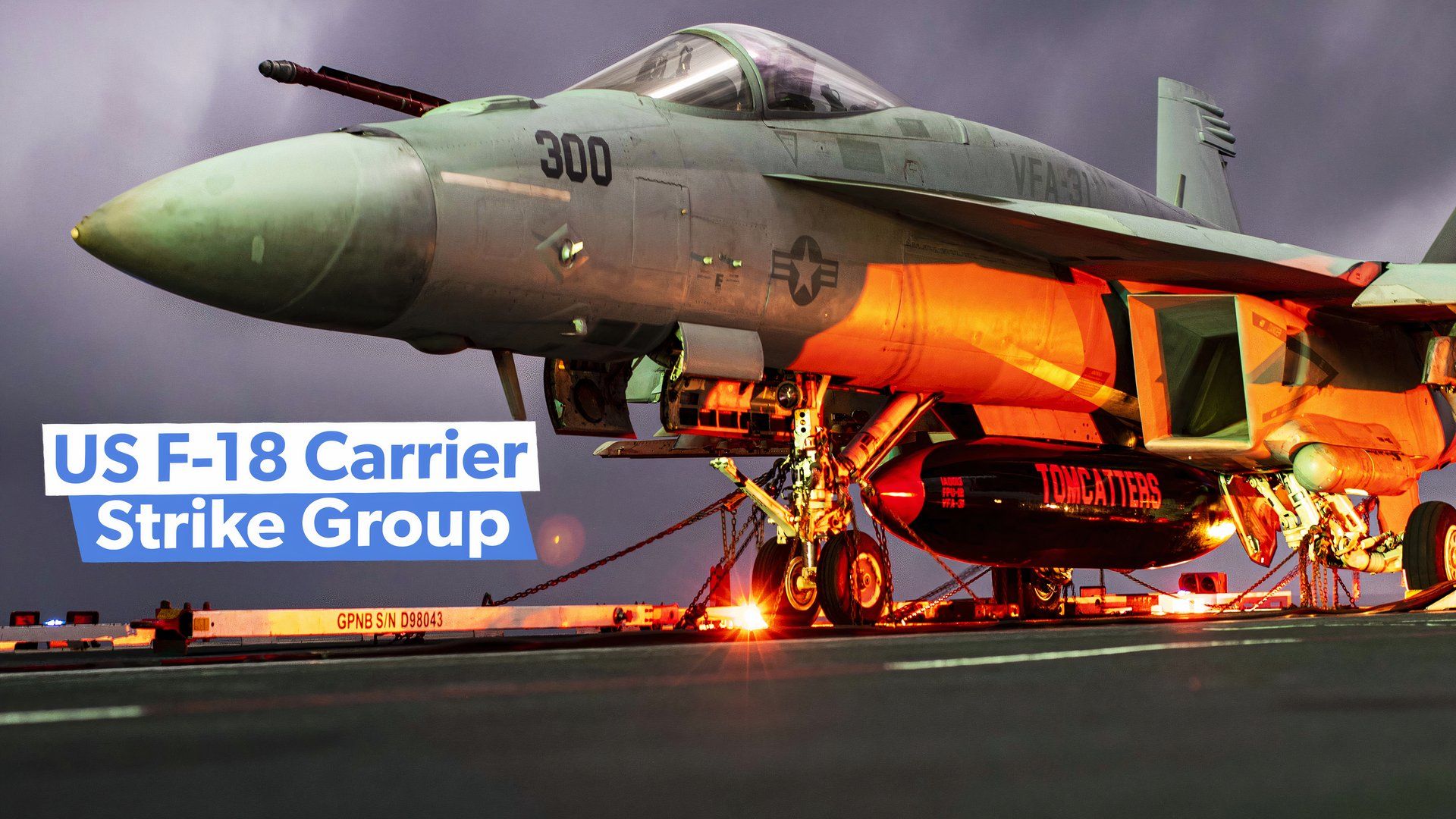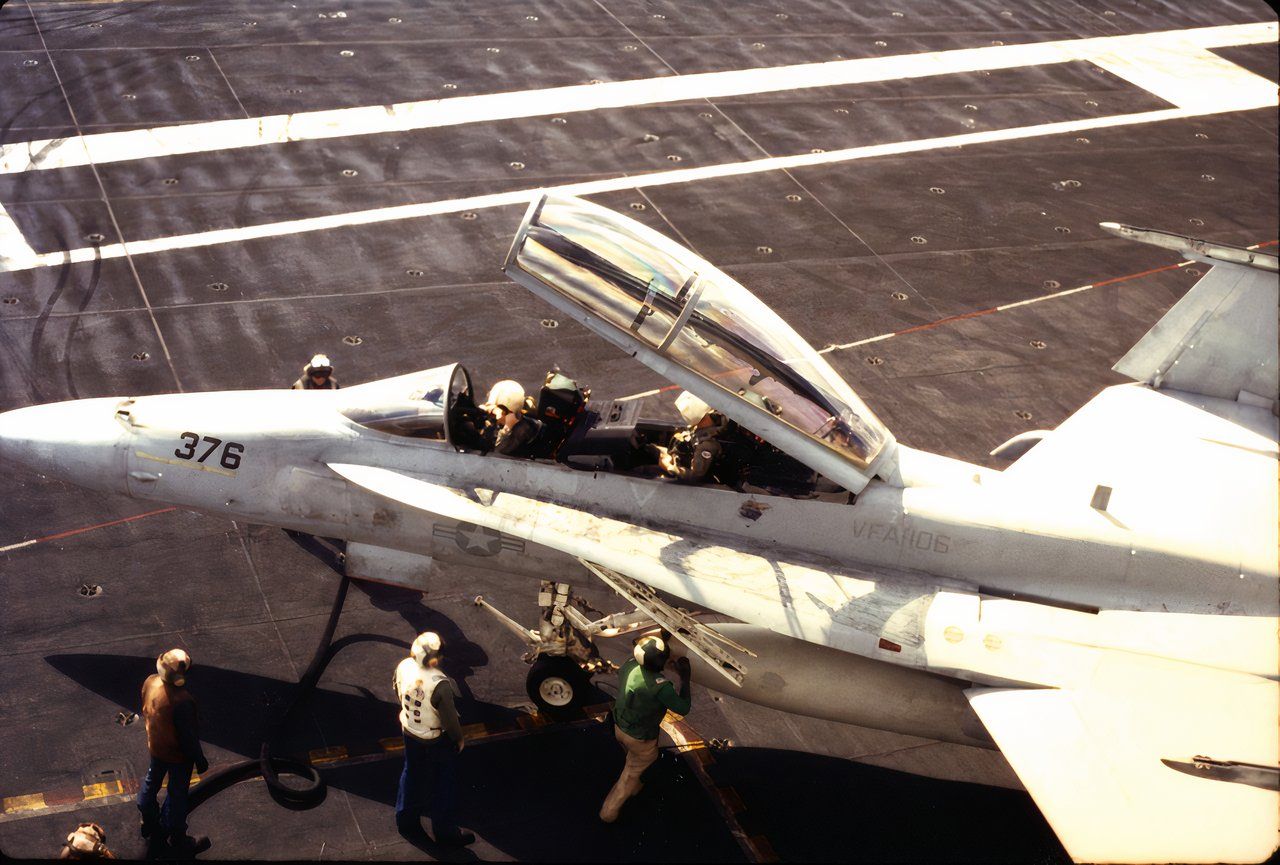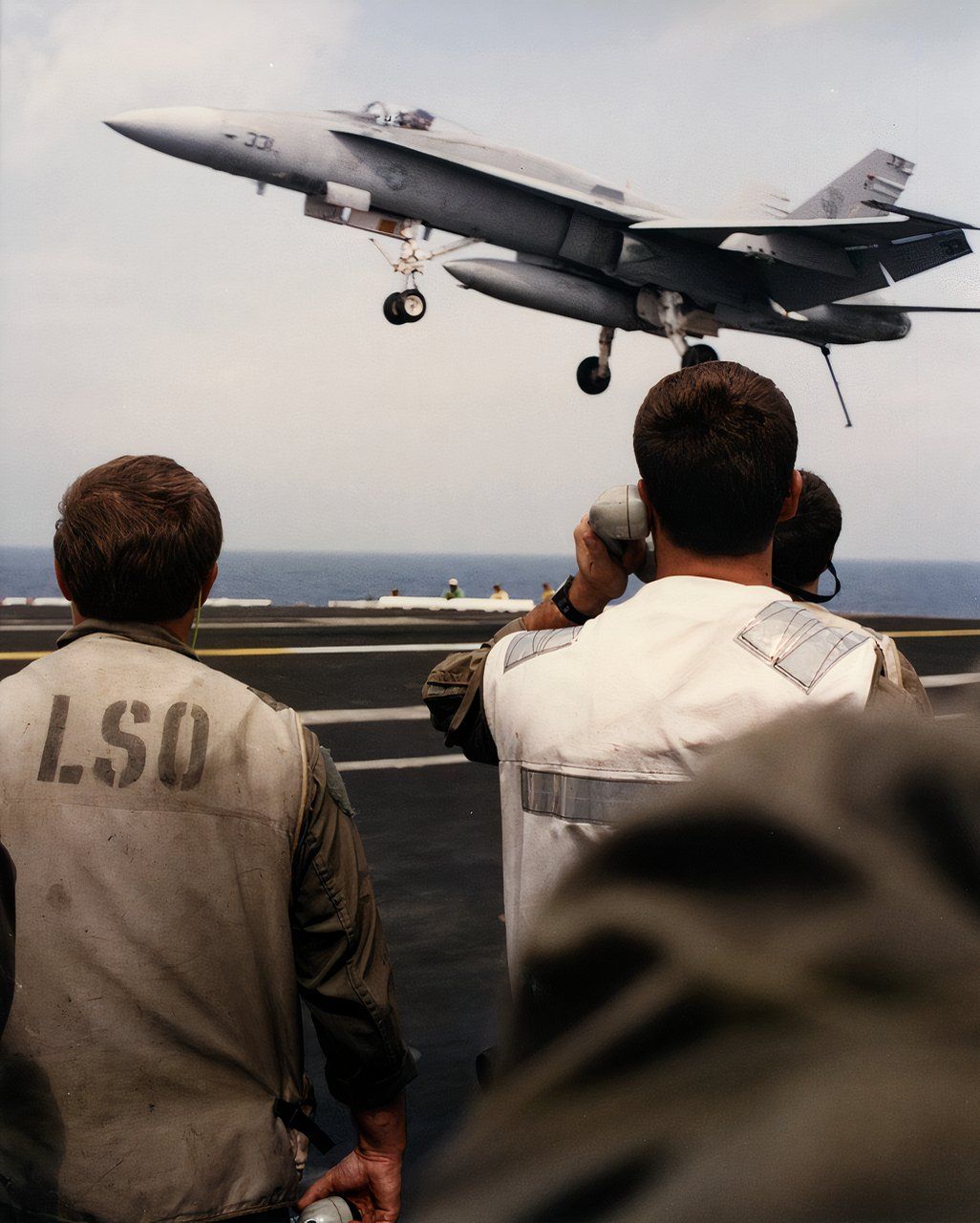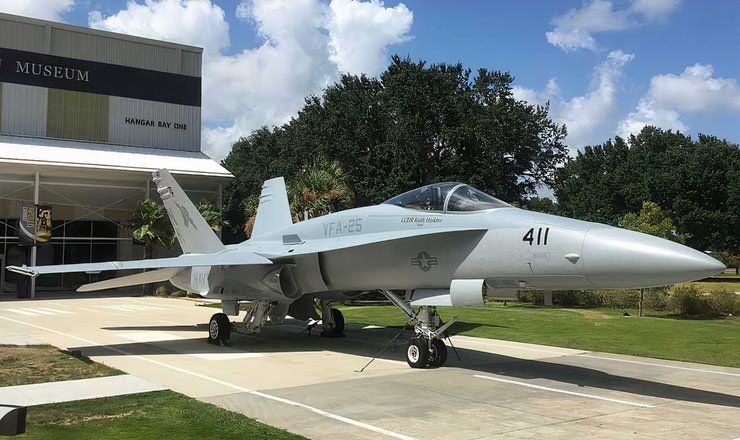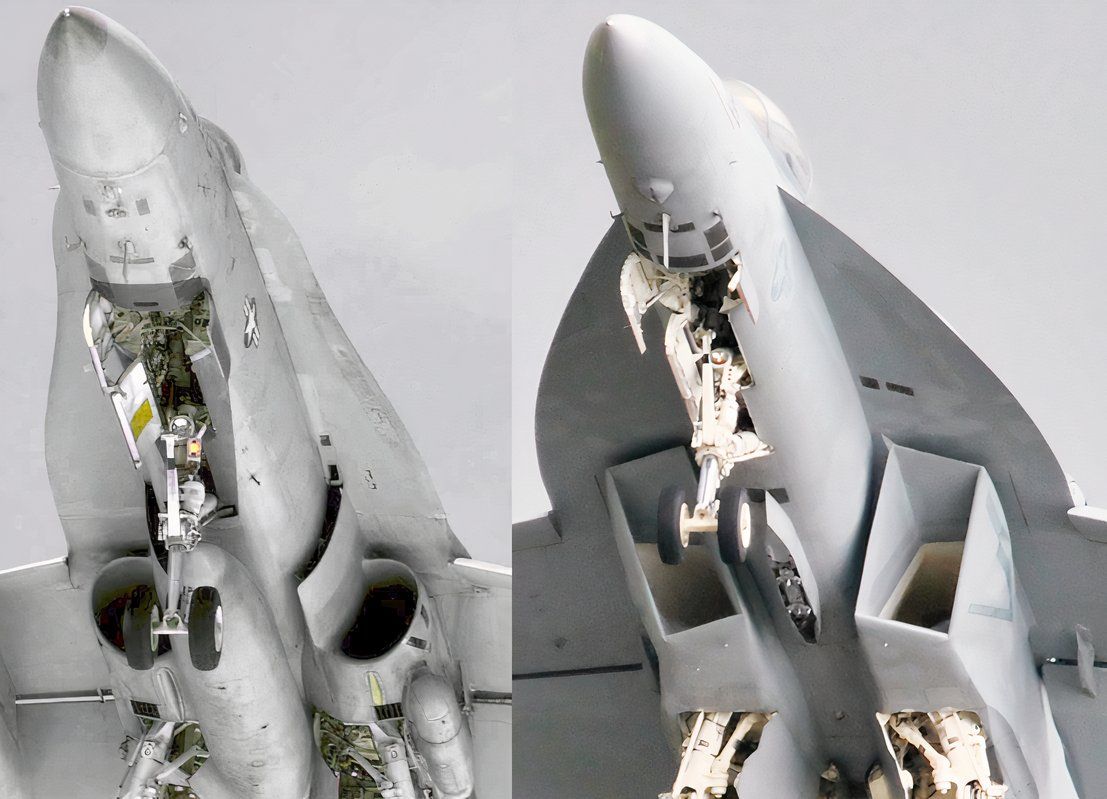The US Navy
‘s Carrier Strike Group (CSG) power projection ashore strategy is critical in enhancing national security and global stability. This strategy features aircraft carriers as the central pillars of a global force, their supporting ships like destroyers and submarines work together to project power from the sea. By serving as a mobile airbase, CSGs can conduct airstrikes and reconnaissance missions and support ground forces in any operational theater. Their ability to operate independently of land bases allows for rapid response to crises and sustained military
operations in contested environments.
Incorporating advanced technology and fostering joint operations with allied forces, the CSG strategy enhances adaptability and effectiveness against evolving threats. This power projection capability not only deters potential adversaries but can also be used to provide humanitarian assistance and disaster relief when needed, supporting the Navy’s commitment to ensuring maritime security and freedom of navigation worldwide.
Power from the Sea
The US Navy utilizes F/A-18 Super Hornets to project power ashore, enhancing military readiness and deterrence. Deployed from aircraft carriers, these strike fighters conduct precision airstrikes, support ground forces, and gather intelligence in contested environments. Their advanced capabilities, including the ability to carry precision-guided munitions, enable rapid response to emerging threats. By maintaining a strong naval presence with the Super Hornet, the Navy ensures operational flexibility, reinforces alliances, and protects national interests. This strategy exemplifies the Navy’s commitment to global security and maritime stability through effective power projection ashore.
The US Navy’s air wings conduct missions from anywhere the carrier can sail. Utilizing coordinated strike packages, they ensure rapid response to threats while maintaining air superiority. Advanced technologies
, such as Joint Direct Attack Munitions (JDAMs) and targeting systems, enhance mission effectiveness. By integrating with joint forces and allies, Navy air wings reinforce deterrence, support ground operations, and ensure maritime security, showcasing the Navy’s commitment to global stability through effective power projection.
9 Carrier Strike Groups and Amphibious Ready Groups
Below is a summary of the key statistics from the USNI News Fleet and Marine Tracker of the 9 Carrier Strike Groups and Amphibious Ready Groups (ARG) deployed across the globe as of September 30, 2024:
- Total Ships in Service: 293
- Aircraft Carriers: 11
- Amphibious Assault Ships: 12
- Destroyers: 70
- Submarines: 54 (including 22 ballistic missile submarines)
- Expeditionary Sea Bases: 4
- Fleet Marine Forces: 174,000 active personnel
- Total Marine Corps: 185,000
These numbers demonstrate the current capabilities of the US Navy and Marine Corps
, highlighting their readiness and operational capacity to respond to conflict in any corner of the globe whenever called upon.
The Hornet
The F/A-18 Hornet transformed naval aviation
with its heads-up display (HUD), minimizing cockpit distractions for pilots. Designed for maintainability, the Hornet allows squadron personnel to replace engines in just 20 minutes, while its radar systems enable quick inspections. Deliveries began in May 1980, with VMFA-314 becoming the first operational squadron in January 1983. The Hornet’s first carrier deployment was in 1985, followed by combat during Operation El Dorado Canyon against Libya.
The upgraded F/A-18C, received in 1987, supported advanced
missiles. The night-attack F/A-18D entered service in 1990. During Operation Desert Storm, fourteen squadrons showcased the Hornet’s versatility, successfully engaging multiple targets in a single mission. The F/A-18 Hornet continued to play a vital role in operations against Iraq and Afghanistan throughout the Global War on Terror.
Manufacturer: McDonnell Douglas Corporation (now Boeing)
-
Type: Strike
Fighter - Crew: A & C Models – One (1); B & D Models Two (2)
- Max Speed: 1,190 mph (1,915 kmh) at 45,000 ft (13,715 m)
- Ceiling: 50,000 ft (15,240 m)
- Range: 1,253 miles (2,016 km)
- Powerplant: Two (2) 17,700 lbs (8,028 kg) thrust with afterburner turbofans
- Length: 56 ft (17 m)
- Height: 15 ft-4 in (4.6 m)
- Wingspan: 40 ft-5 in (12.3 m)
- Empty Weight: 23,050 lbs (10,455 kg)
- Gross Weight (fighter mission): 36,410 lbs (16,515 kg)
- Gross Weight (attack mission): 51,900 lbs (23,541 kg)
- Armament: One (1) M61 20mm cannon and provision for 17,000 lbs (7,710 kg) of ordnance, including Sparrow and Sidewinder air-to-air missiles, general purpose bombs, Maverick and HARM missiles, and Walleye glide bomb
The Super Hornet
The F/A-18 E and F Super Hornet, introduced by McDonnell Douglas
(now part of ![]() Boeing
Boeing
) in 1995, includes a single-seat E variant and a dual-seat F variant, enhancing training and mission capacity through shared workload. Significantly larger than the F/A-18 Hornet, the Super Hornet weighs approximately 7,000 pounds more and has a 50% greater range, while requiring fewer parts and maintenance.
The F/A-18 E’s first operational cruise was with VFA-115 on the USS Abraham Lincoln (CVN 72) in July 2002. Its initial combat action occurred that November in Iraq’s no-fly zone. The Super Hornet’s robust airframe supports an open mission systems architecture, facilitating easy integration of new technologies.
Block II introduced AESA radar and advanced sensors, while the latest Block III version offers a service life of 10,000 flight hours, reduced radar
signature, and an upgraded cockpit with touchscreen displays. Comprehensive testing is ongoing before its highly anticipated deployment with the fleet to bring even greater operational capabilities to the Strike Fighter community.
Manufacturer: McDonnell Douglas Corporation (now Boeing)
- Type: Strike Fighter
- Crew: E Model – One (1); F Model – Two (2)
- Max Speed: Mach 1.8+
- Ceiling: 50,000 ft (15,240 m)
- Range: 1,275 nautical miles (2,346 km)
- Powerplant: Two (2) 17,700 lbs (8,028 kg) thrust with afterburner turbofans
- Length: 60 ft (18.5 m)
- Height: 16 ft (4.9 m)
- Wingspan: 45 ft (13.7 m)
- Weight: Maximum Take Off Gross Weight is 66,000 lbs (29,932 kg)
- Armament: One (1) M61A1/A2 Vulcan 20mm cannon; AIM 9 Sidewinder, AIM-9X (projected), AIM 7 Sparrow, AIM-120 AMRAAM, Harpoon, Harm, SLAM, SLAM-ER (projected), Maverick missiles; Joint Stand-Off Weapon (JSOW); Joint Direct Attack Munition (JDAM); Data Link Pod; Paveway Laser Guided Bomb; various general purpose bombs, mines and rockets.

